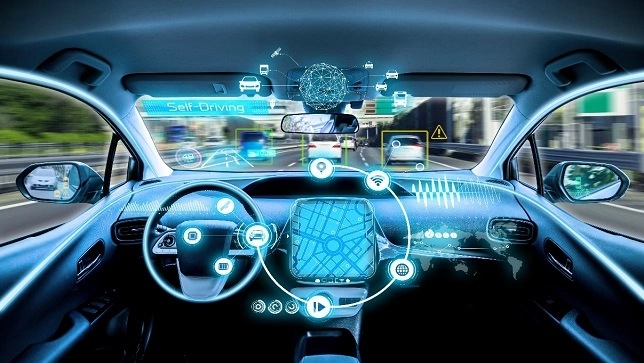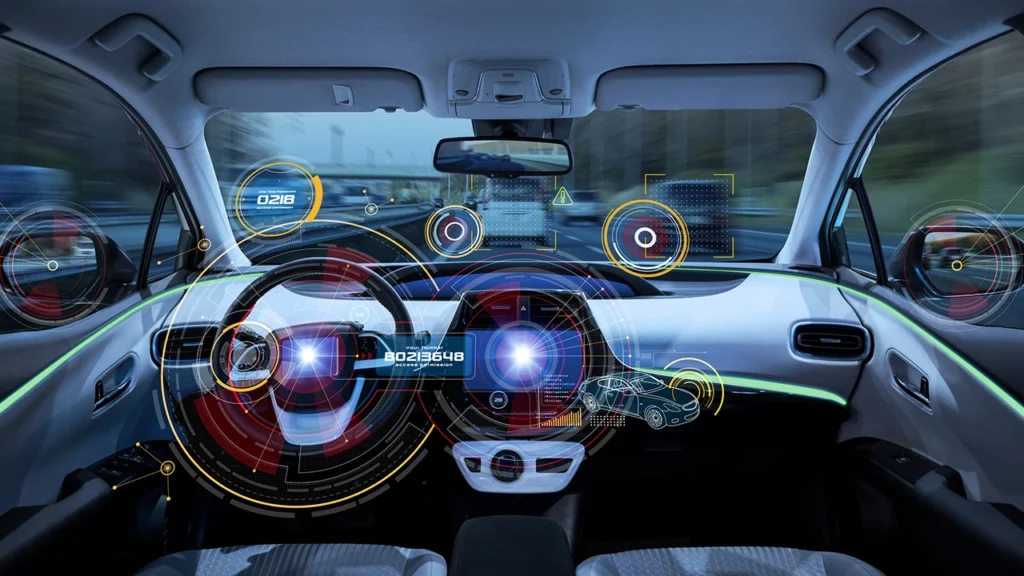The future of cars isn’t just about electric power—it’s about connectivity, and 5G is the engine driving that transformation. As the automotive industry races toward smarter, safer, and more autonomous vehicles, 5G technology is playing a crucial role in redefining how we interact with our cars and the road.
In 2025, 5G is no longer a futuristic buzzword—it’s a reality shaping everything from vehicle-to-vehicle communication to real-time data processing. Let’s explore how 5G is transforming the automotive world.
🚗 What Makes 5G a Game Changer for Automobiles?

Compared to 4G, 5G offers ultra-low latency, higher bandwidth, and faster data speeds. For modern vehicles, this translates to:
- Faster communication between vehicles (V2V)
- Reliable connections with infrastructure (V2I)
- Instant data exchange with the cloud and edge devices
- Support for autonomous driving systems
These improvements unlock a world of innovation, from self-driving technology to immersive in-car experiences.
🔧 Key Applications of 5G in the Automotive Industry

1. 🚦 Vehicle-to-Everything (V2X) Communication
With 5G, cars can now communicate not just with each other, but with traffic lights, road signs, and even pedestrians’ smartphones. This V2X technology improves:
- Traffic flow and congestion management
- Road safety by preventing collisions
- Real-time navigation based on road conditions
2. 🚘 Autonomous Driving and Remote Control
Autonomous vehicles rely on sensors, cameras, and AI—but 5G ties it all together. With low latency communication, vehicles can:
- Process vast amounts of data instantly
- Make split-second decisions
- Be remotely monitored or even driven in emergencies
Think of it as the nervous system for self-driving cars.
3. 🛠 Predictive Maintenance and Smart Diagnostics
5G enables cars to constantly stream performance data to manufacturers or fleet managers. This helps:
- Detect issues before they become problems
- Schedule maintenance proactively
- Reduce unexpected breakdowns and costs
It’s like your car telling the mechanic what’s wrong—before you even know there’s a problem.
4. 📱 Enhanced In-Car Experience
Passengers can enjoy seamless streaming, video calls, and gaming, even in a moving vehicle. With 5G, cars become:
- Mobile entertainment hubs
- Smart workspaces on the go
- Personalized travel assistants
Expect better voice assistants, real-time translations, and AR navigation in your windshield.
5. 🚚 Fleet Management and Logistics
In logistics and commercial transport, 5G improves:
- Fleet tracking in real time
- Route optimization using live data
- Communication between drivers and dispatchers
- Fuel efficiency and delivery accuracy
This translates to lower operational costs and higher customer satisfaction.
🏙 Smart Cities and Connected Cars
As cities get smarter, connected vehicles are becoming a key part of urban planning. With 5G:
- Cars can adapt to changing traffic patterns automatically
- Emergency vehicles can clear a path through smart traffic lights
- Public transportation becomes more efficient and synchronized
This tight integration between infrastructure and mobility is only possible with 5G.
⚠️ Challenges and Considerations
Despite its promise, 5G in the automotive industry still faces a few roadblocks:
- Network coverage in rural areas remains limited
- Cybersecurity risks increase with more connected endpoints
- High costs of implementation for manufacturers and cities
- Regulatory hurdles for V2X and autonomous driving adoption
However, ongoing investments and global standards are helping solve these issues, paving the way for mass adoption.
🚀 Final Thoughts: 5G Is Steering the Future of Mobility
5G isn’t just an upgrade to your phone—it’s a foundational shift in how vehicles operate, communicate, and serve their passengers. In 2025, we’re already seeing the impact:
- Safer roads
- Smarter cars
- Better driving experiences
- A step closer to full autonomy
As 5G networks expand and technologies mature, the automotive industry is set to enter a new era of innovation and connectivity.
Ready for the ride? The future of driving is not just about speed—it’s about how fast your car can talk, think, and respond. And with 5G, that future is already here.

